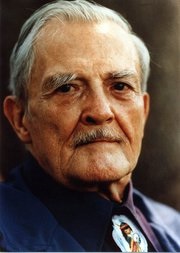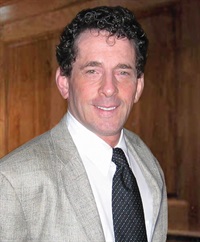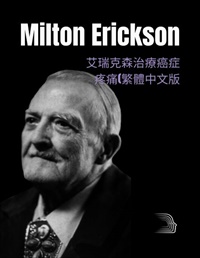Dr. Erickson's Approaches to Cancer Pain (No CE Credit)
- Average Rating:
- Not yet rated
- Topic Areas:
- Pain and Healing | Milton Erickson | Ericksonian Hypnosis and Therapy Techniques | Hypnosis | Strategic Therapy | Utilization | Cancer
- Categories:
- Erickson Materials | Erickson Streaming Video Collection | Milton H. Erickson Collections
- Faculty:
- Milton H. Erickson MD | Jeffrey Zeig, PhD
- Course Levels:
- Master Degree or Higher in Health-Related Field
- Duration:
- 1 hour
- Format:
- Audio and Video
- Original Program Date:
- May 07, 2020
- License:
- Never Expires.
Description
Description:
This video focuses on Milton Erickson’s approaches to dealing with pain, specifically cancer pain.
Milton Erickson was primarily a conceptual communicator. Occasionally, he would impart facts, but most of the time he would communicate a concept by using experiential methods. He would also frequently use multilevel communication: on a social level casually talking about something, but on a psychological level, implying meaning that was palliative.
This video features three separate cases, but all demonstrate Erickson’s fundamental method of utilization. Utilization is the foundation of solutions to all problems, and it is a philosophy of living which was central Erickson’s life and work as a therapist. He demonstrated that whatever existed in the situation, whatever the patient presented, could be utilized to advance the therapy.
Another one of Erickson’s fundamental approaches seen in the video is strategic communication. Strategic communication is a method of using a series of steps in the therapeutic process. A therapist should first have an outcome in mind. What do you want to accomplish? Then, decide on a therapeutic initiative. And finally: How can you accomplish what you want to achieve?
Erickson extensively wrote about using hypnosis for pain control. Perhaps because he had chronic pain and was familiar with devising methods to control his own pain. The methods Erickson used to help others, were experimented with by him. He was truly a physician who sought to not only heal himself, but to heal others.
Credits
Handouts
| Dr. Erickson's Approaches to Cancer Pain Transcript (93.9 KB) | Available after Purchase | ||
Faculty

Milton H. Erickson MD Related Seminars and Products
Milton H. Erickson, MD, was an American psychiatrist who specialized in medical hypnosis and family therapy. He was founding president of the American Society for Clinical Hypnosis and noted for his approach to the unconscious mind as creative and solution-generating.
Dr. Erickson was plagued with enormous physical handicaps for most of his life. At age 17, he contracted polio and was so severely paralyzed that doctors believed he would die. While recovering in bed, almost entirely lame and unable to speak, he became strongly aware of the significance of nonverbal communication – body language, tone of voice, and the way that these nonverbal expressions often directly contradicted the verbal ones. He also began to have “body memories” of the muscular activity of his own body. By concentrating on these memories, he slowly began to regain control of parts of his body to the point where he was eventually able to talk and use his arms again. His doctor recommended exercising his upper body only so Milton Erickson planned a 1,000 miles canoe trip to build up the strength to attend college. His adventure was challenging, and although he still did not have full use of his legs at the end, he was able to walk with a cane.
The Ericksonian approach departs from traditional hypnosis in a variety of ways. While the process of hypnosis has customarily been conceptualized as a matter of the therapist issuing standardized instructions to a passive patient, Ericksonian hypnosis stresses the importance of the interactive therapeutic relationship and purposeful engagement of the inner resources and experiential life of the subject. Dr. Erickson revolutionized the practice of hypnotherapy by coalescing numerous original concepts and patterns of communication into the field.
The novel psychotherapeutic strategies which Dr. Erickson employed in his treatment of individuals, couples, and families derived from his hypnotic orientation. Although he was known as the world’s leading hypnotherapist, Dr. Erickson used formal hypnosis in only one-fifth of his cases in clinical practice.
Dr. Erickson effected a fundamental shift in modern psychotherapy. Many elements of the Ericksonian perspective which were once considered extreme are now incorporated into the mainstream of contemporary practice.

Jeffrey Zeig, PhD Related Seminars and Products
Jeffrey K. Zeig, PhD, is the Founder and Director of the Milton H. Erickson Foundation and is president of Zeig, Tucker & Theisen, Inc., publishers in the behavioral sciences. He has edited, co-edited, authored or coauthored more than 20 books on psychotherapy that appear in twelve foreign languages. Dr. Zeig is a psychologist and marriage and family therapist in private practice in Phoenix, Arizona.
Alternate Options
Reviews
Advanced Techniques of Hypnosis & Therapy: Therapy within a Marital System - Video Stream
Rating: Not yet rated
$75.00 - Base Price
Advanced Techniques of Hypnosis & Therapy: The Process of Hypnotic Induction - Video Stream
Rating: Not yet rated


